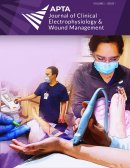S1 Radiculopathy in a Young Adult: A Conjoined/Bifid Nerve Root
Read the full text >Abstract
Abstract
Low back pain (LBP) in children and young adults is most often attributed to muscle strain or over-use but can also occur with other spinal conditions such as inflammatory arthropathies, disc herniation, radiculopathy, spondylolysis and spinal deformities such as scoliosis.1 While most LBP in this population resolves with conservative care, more serious pathology may necessitate further diagnostic testing and surgical intervention.1
This case details the electrodiagnostic testing, subjective and objective clinical exams, magnetic resonance imaging (MRI) results and interventions for an 18-year male high school student with LBP. He reported a five-year history of central LBP that more recently progressed to left greater than right radicular symptoms in an S1 dermatomal pattern in the lower extremities.
Electrodiagnostic (EDX) testing, specifically needle electromyography (EMG) studies, demonstrated a left S1 radiculopathic process affecting the left anterior and posterior primary rami with axonal loss and chronic denervation in the left fibularis longus, lateral gastrocnemius, long head of the biceps femoris, and sacral paravertebral muscles (PVM). Findings on magnetic resonance imaging were consistent with the EDX results.
The patient underwent an L4-L5 and L5-S1 left sided minimally invasive discectomy with hemilaminectomy at the left L4-L5 and L5-S1 levels. The orthopaedic spine surgeon noted a conjoined or bifid nerve root at the L5-S1 level which may or may not have contributed to his spinal pathology at a relatively young age. A discussion of conjoined (bifid) nerve roots and juvenile degenerative disc disease is provided.



